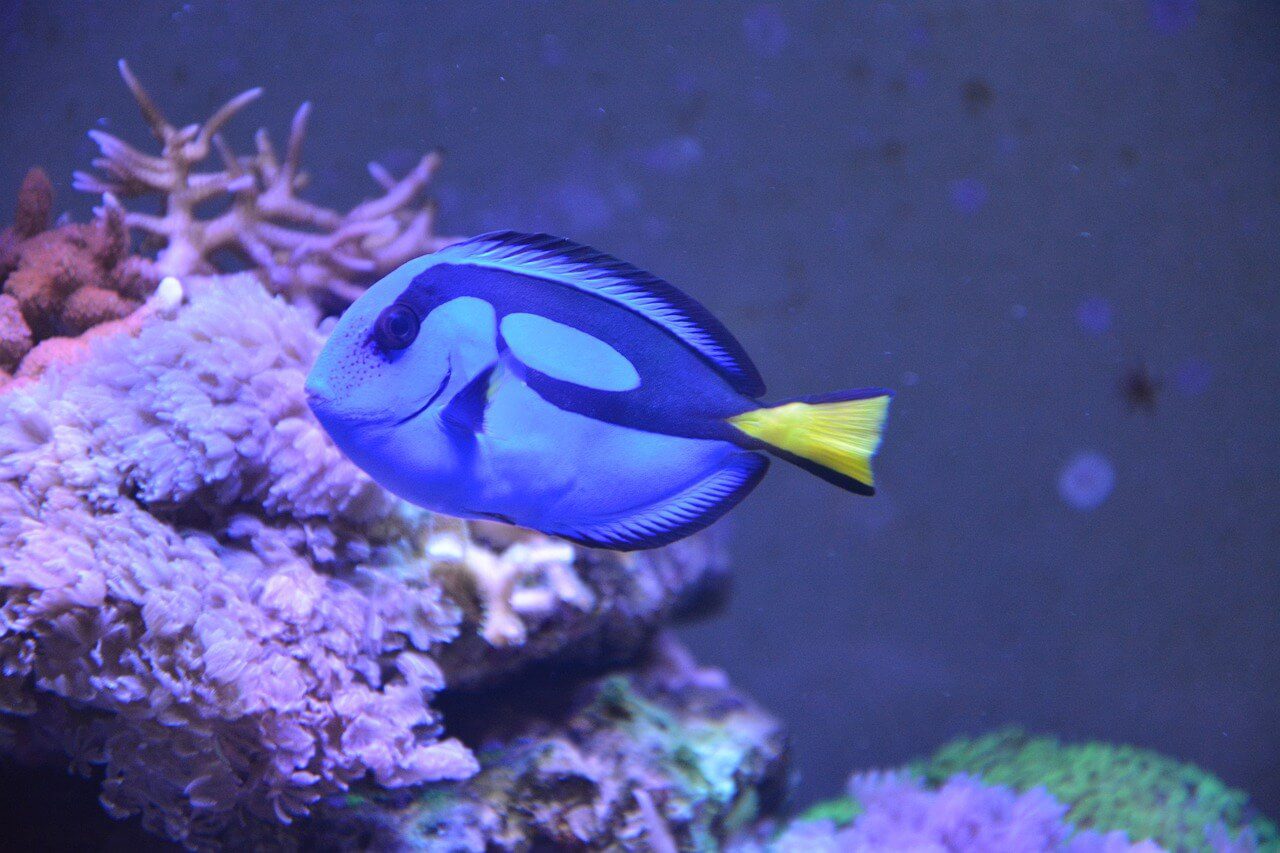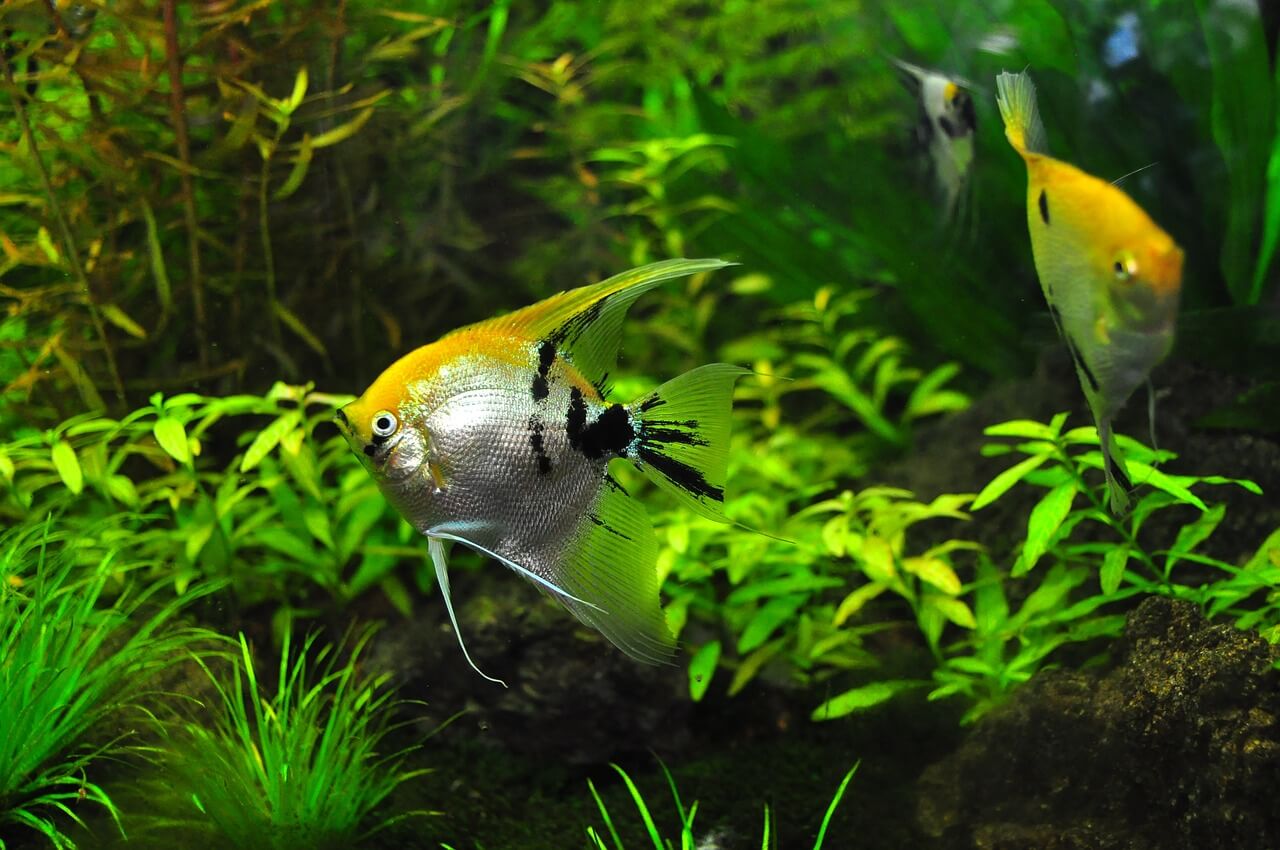A saltwater aquarium makes an incredible addition to any home. Not only is it stunning to look at, but it allows you to showcase an array of colorful, tropical, and exotic fish that would be impossible to maintain in a freshwater tank. But if you want to go the saltwater route, you have to learn the finer points of saltwater aquarium maintenance. Marine animals require a precise ecosystem in which to thrive, and you have to be proactive every day to maintain that environment.
1. Check Your Salinity Every Day
It’s very important to keep your salinity in the optimal range — usually around 1.024 to 1.026 (32 – 35 ppt). With a heated saltwater tank, you’re going to lose salinity on a regular basis. As water naturally evaporates, the salt concentration increases. When this happens, you need to add just enough freshwater to restore the salinity to the optimal range. On rare occasions, you might also need to add salt to your aquarium as part of your saltwater aquarium maintenance. Do this if your salinity falls to 1.020 or below. The easiest way to test your salinity every day is with a pocket tester like the IceCap Salinity Digital Pocket Tester or the HYDROS Salinity Kit.
2. Check Your Water Temperature Every Day
You want to keep your aquarium between 75 and 78 degrees Fahrenheit at all times. It’s important to check your temperature daily, because if a heater suddenly goes out, the temperature drop can upset your marine ecosystem very quickly. It’s easy to keep track of your temperature with an aquarium temperature sensor. Opt for a digital or submersible sensor, as these tend to be more accurate than external thermometers. A reliable sensor will make your saltwater aquarium maintenance much easier.
3. Feed Your Fish Every Day
When discussing saltwater fish tank maintenance, we would be remiss if we didn’t mention the fish themselves. Different marine species have different feeding requirements, but in general, it’s best to maintain a consistent daily feeding schedule. If you have coral, you might only need to feed them a couple of times per week (though daily feedings might also be appropriate). Corals are in need of daily nutrients for their vitality, so coral supplements can go a long way for growth. The important thing is to research the feeding requirements for your particular species of marine life. There are countless fish food options available, but one excellent choice for feeding marine fish is EasyReefs DKI Marine Fish Food.
4. Change Your Water Every Week

Constant water changes are essential for saltwater aquarium maintenance, especially when your aquarium is new. You’re not going to replace all of the water every week. Ideally, you want to replace about 20% of the water with each changing. This can be done with a gravel vacuum cleaner with siphoning capabilities. Keep the fish in the tank when changing the water, and try to get to the deepest level of substrate. When changing your water, make sure to check your filter media as well. The water should flow freely through the media. If it’s clogged with debris, see if removing the debris resolves the issue. Only manually remove debris from the filter media; do not rinse it with tap water.
5. Clean Your Aquarium Once a Week
Excess algae buildup can seriously damage your aquarium tank. It can overtake your decorative displays, overload your filters, harm your plant life, and upset the overall balance of the environment. To stay ahead of the problem, it’s important to remove your algae once a week using an algae scraper that’s safe for your glass or acrylic surface. Even if you have fish that eat algae, you’ll need to handle some of the algae removal on your own as part of your weekly saltwater aquarium maintenance.
6. Replace Your Filter Media Once a Month
Even if you’re diligent with the rest of your saltwater fish tank maintenance, it’s still important to replace your mechanical and chemical filter media once a month. This will prevent any harmful disruptions to the water flow. DO NOT replace all of your filter media at the same time if you can avoid it — you can lose beneficial bacteria this way.
7. Test Your Water Quality At Least Once a Week
Make sure to keep plenty of marine test kits on hand. You want to test regularly for levels like nitrate, nitrite, ammonia, and pH balance. While weekly tests are suitable for most aquariums, you’ll want to test daily if you’re introducing any new marine life or equipment into the aquarium.
Saltwater Aquarium Maintenance Is a Daily Commitment
Maintaining a marine environment inside your home can be a challenge, but if you dedicate just five to 10 minutes a day to saltwater fish tank maintenance, you can easily prevent more costly and time-consuming problems from emerging down the line.
Find all of your saltwater aquarium maintenance essentials right here at Fish and Coral Store, the West Coast’s premier fish and aquarium store. And if you have any questions about maintenance or how to address an aquarium problem, feel free to reach out to our friendly and knowledgeable team at any time!


Interested in saltwater tank self- maintenance.
I have APEX system with Neptune feeder in 300 and a 280 gallon tanks. I want to be able to know and able to change RO water filtering system.
My tank maintenance guy tested both tanks, changes RO water filter with product at his home office, getting expensive, I think I want to learn as much about maintaining the system before things change for him, and raise prices again .